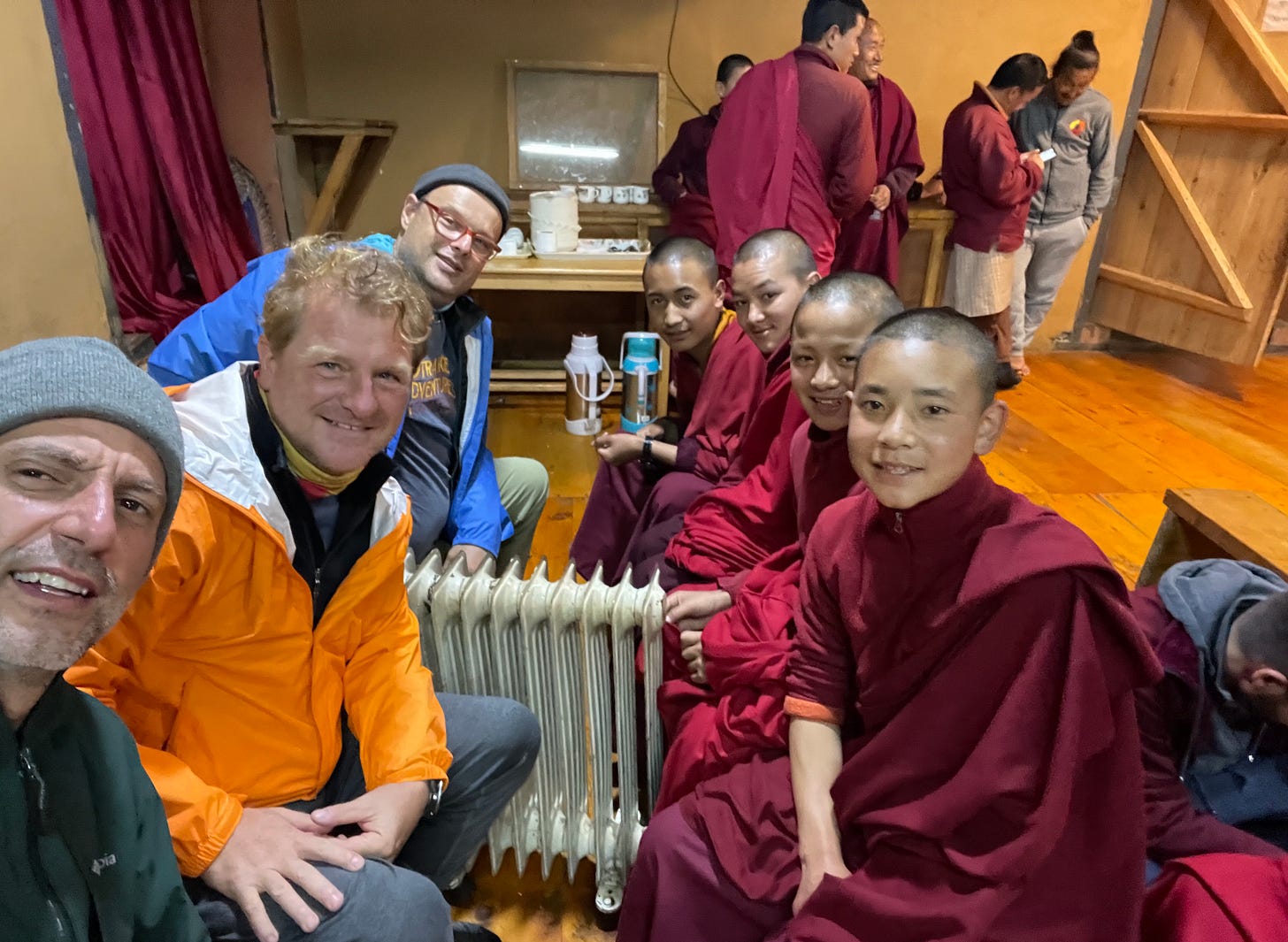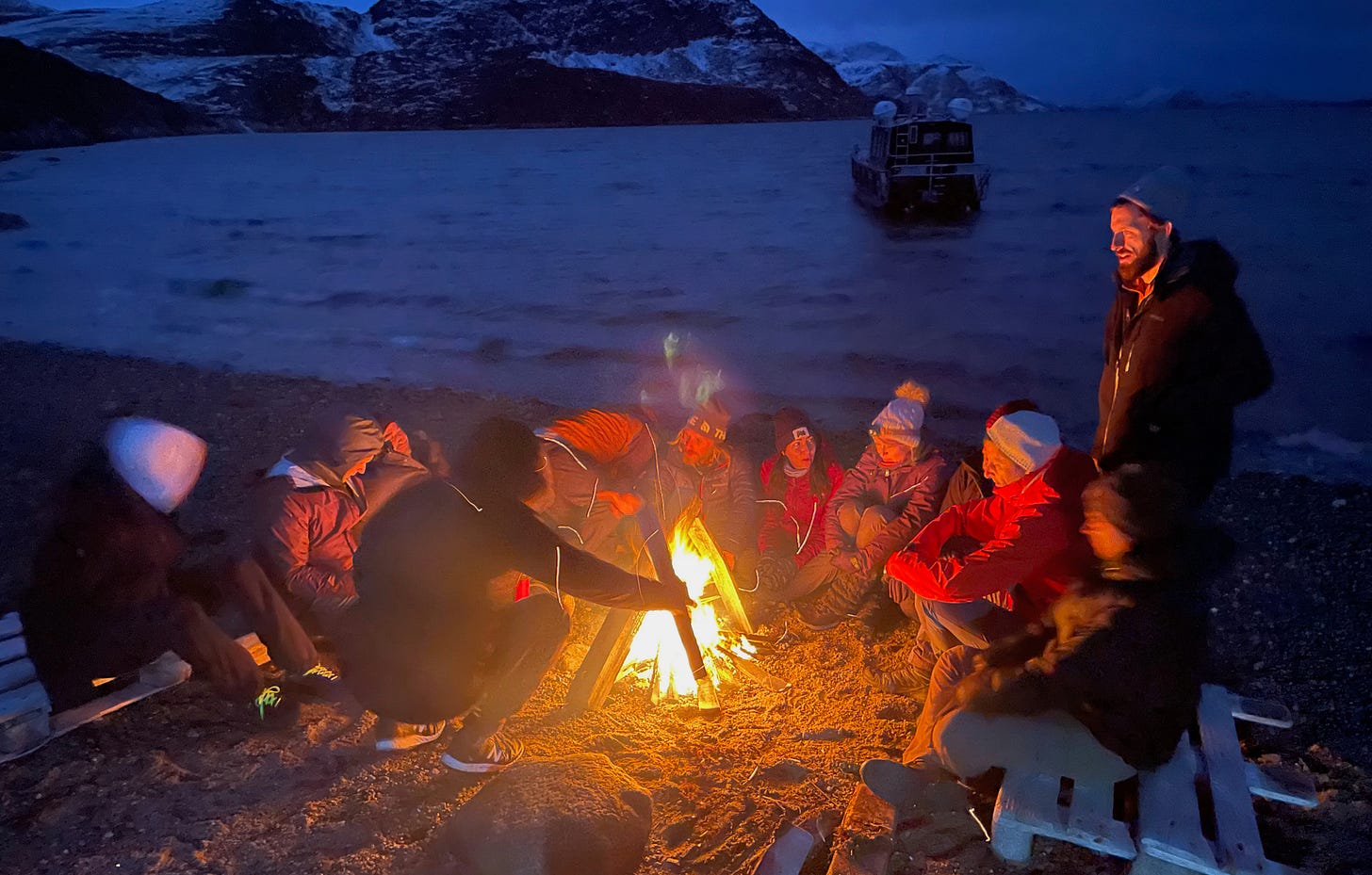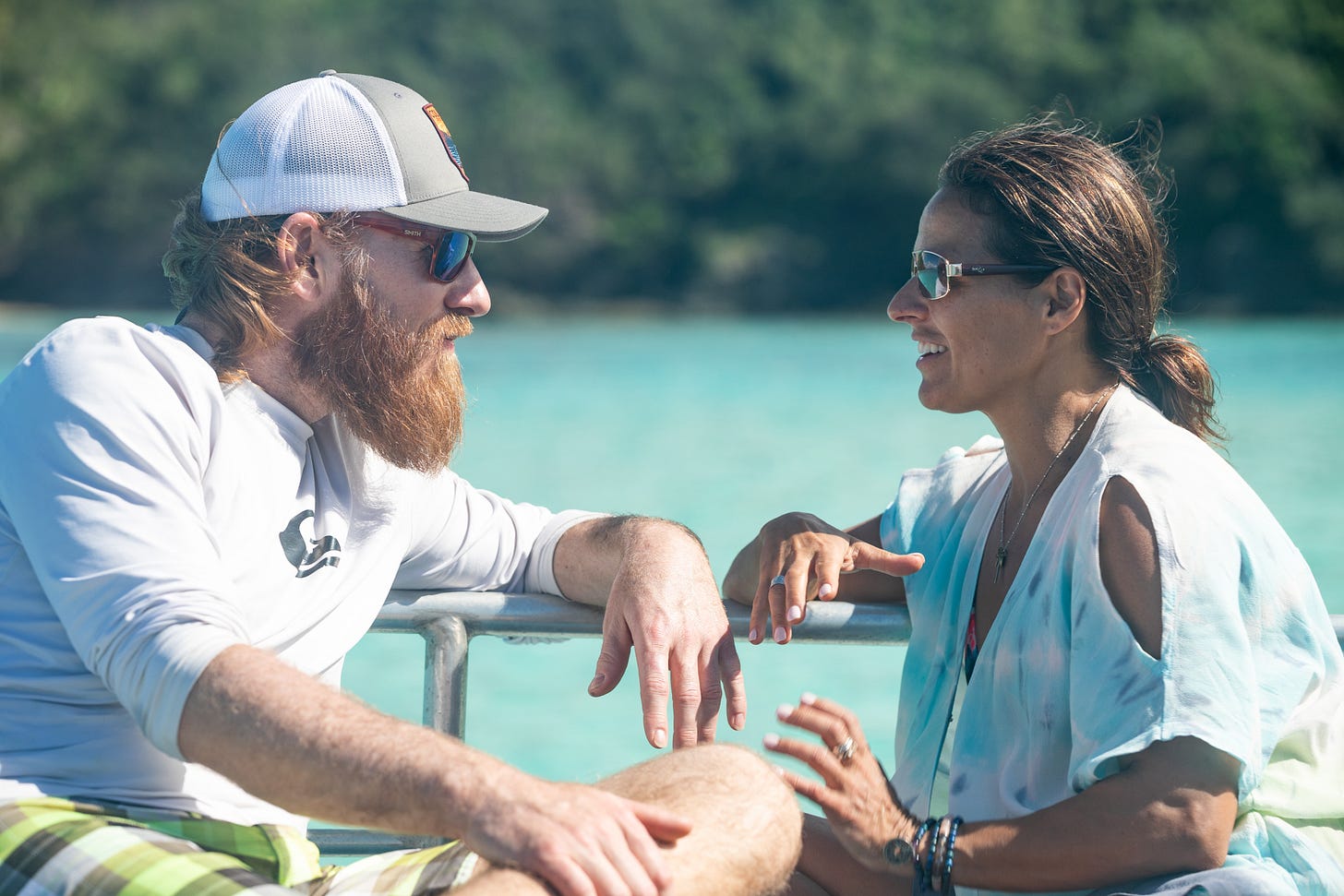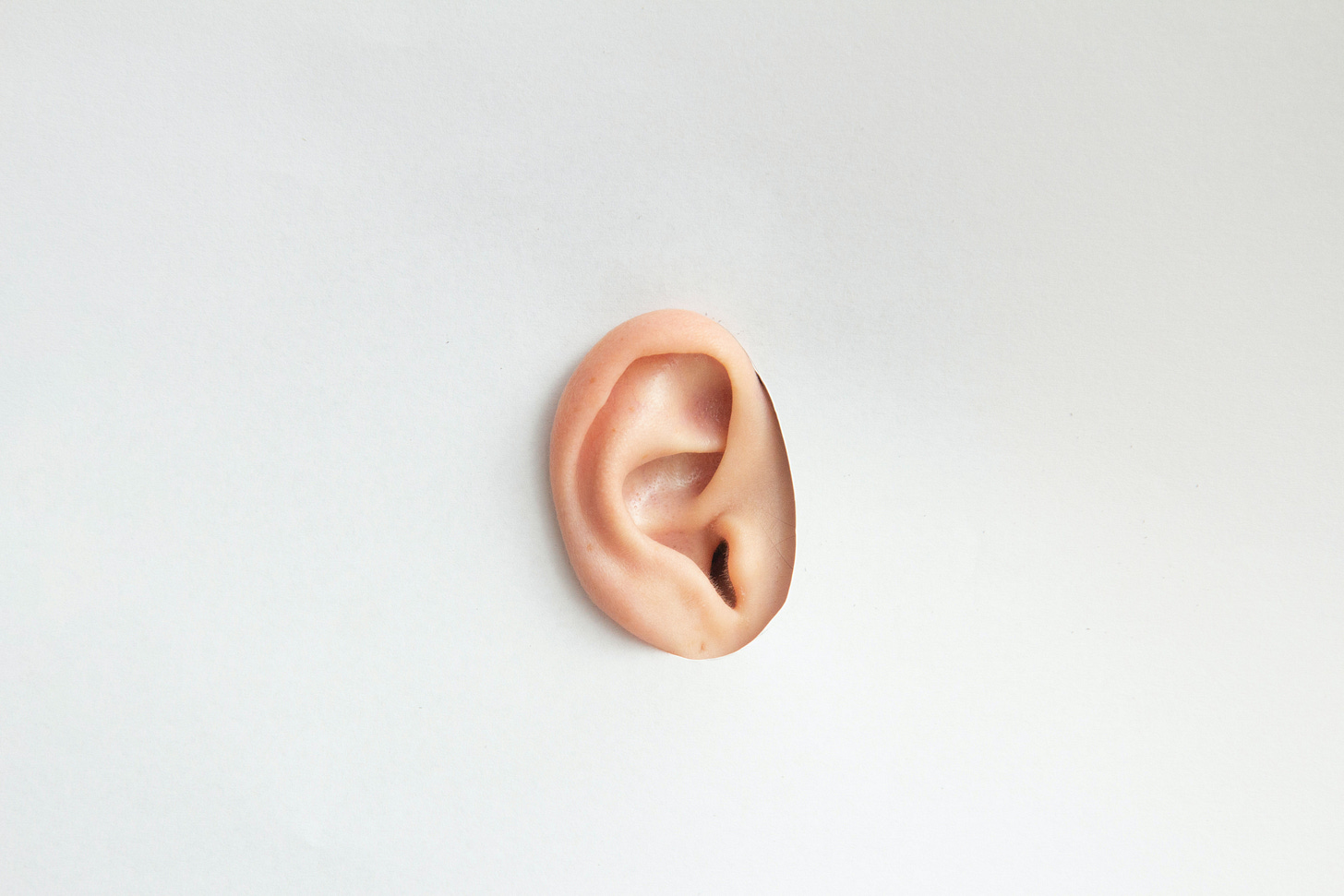Restoring Connection, vol. V: Connection to Others (part II)
Volume V of a nine-volume series on restoring connection in our world (and the 2nd of 3 posts on connecting with others)
This is the fifth in a nine-part mini-series about restoring connection in our world and why and how disconnection is at the heart of so many of the grand issues of our time. If you haven’t already, check out the series introduction and table of contents.
NOTE: this topic (connecting with others) is such an important one that I’ve split it into 3 parts. This is part 2, and you can read part 1 here.
In October of 2022, I found myself in the kingdom of Bhutan at a remote monastery high up the side of a mountain at 3700m.
I had brought a group of entrepreneurs there with my company, Wayfinders; we had just spent the previous two days and nights there, sleeping in cramped and cold quarters, eating, meditating and playing with the monks (most were under the age of 12). It was simultaneously difficult and beautifully easy.
On the morning of our last day, we were saying our goodbyes when I spied a young monk - about 8 years old, with whom I had had a few interactions - offering his small bag of potato chips to one of our participants.
I watched as Cameron politely withdrew a chip and said thank you. The young boy proceeded to then walk around the room, offering a potato chip to each one of his fellow acolytes. By the time he’d made his way around the room, he had only 2 or 3 chips left, which he nevertheless gobbled with great enthusiasm and a wide smile.
Soon after we passed through the gates of the monastery and headed down the mountain, back to town. The potato-chip moment stayed with me, however, and I reflected on the unique nature of the interaction, as well as the unique personal worldview that must have contributed to it.
I, like most people, like to consider myself a considerate and generous person. I, however, usually fall short of giving away 95% of any particular possession, my food-sharing limit typically falling well short of 50%.
This young boy, a boy who spends at least 3 hours of his day in deep meditation and chanting with his fellow monks, acted as if it were inherently obvious that the bag was to be shared with all of his brethren. In this one act, he gracefully embodied the spirit of Ubuntu that I wrote about in my last email (“I am because we are.”).
How deeply connecting it must be, I wondered, to live amongst people who view the world, and their obligations to others, in this way.
In my last email, I wrote about the crisis of loneliness that had taken hold in much of the Western world (and, increasingly, the whole world), along with a few considerations and questions to help you get more clarity around the type of connection that lights you up.
In today’s email, I’ll share my thoughts about 3 critical ingredients for deep, meaningful human connection.
I want to reiterate that if there is one thing I want readers to take away from these posts about connecting with others, it is that meaningful and nourishing connection doesn’t occur by accident: it is both a skill and a practice.
We are not 3rd-graders, thrust daily into an environment with our peers, with a lack of inhibition facilitating easy connection with others. We are busy adults, bearing the scars and wounds of a lifetime of hurts and betrayals, often reluctant to step into the rings of friendship and society, not always in frequent contact with those with whom we want to spend our time.
Nurturing, fostering and maintaining meaningful connections with others as an adult takes work. And time. And commitment.
We cannot take our relationships for granted; we cannot afford to allow our relational lives to proceed as if by accident; we cannot assume the phone will ring or that the invites will keep coming.
Three Ingredients for Deep Connection
Years of personal experience and years of creating spaces for deep connection among people have taught me that true, deep connection - the kind of connection that lights us up, fires up our connection neurochemicals and instills in us a sense of belonging - does not occur without the following ingredients, in various measures:
Connection with Self: reconnecting with and developing compassion for yourself
Authenticity and Vulnerability: the ability to simply be yourself with others and the safety to share parts of yourself that feel vulnerable, shameful and/or difficult
Curiosity: a mutual willingness to want to truly know each other
Let’s examine each in turn and explore some practices for bringing them to bear on our relationships.
1. Connection With Self
I’ve already written in the first two emails of this series about the importance of reconnecting to self. It is a practice that has value on its own but is also valuable in the context of connection with others.
When I first began to emerge from my self-imposed isolation during my long, deep depressive episode from 2004-2006, I sought the company of others from a place of desperation: I badly needed human contact but I felt little self-worth, so when I connected with others it came from a place of desperately needing validation from them - any validation.
This was not a healthy foundation for relationships, and I ended up hurting several people in the process, including a woman with whom I was intimately involved at the time.
It wasn’t until later, after months of deep inner work and after developing more compassion and respect for myself, that I was able to approach my relationships from a place of respect, a genuine desire to connect, and authenticity.
When we approach other people from a place of groundedness, authenticity, and an understanding of our own worth and value, we have deeper and more fulfilling relationships. We are able to connect with others because we want to connect with them, rather than because we need their validation.
As Marissa King writes in her book Social Chemistry,
“To be more authentic, we first need to become more self-aware. Start by noticing how you feel in different social interactions. When and with whom do you feel comfortable? When does your heart race and your skin crawl? When do you feel the need to force laughter or stifle comments? When do you simply want to make a run for the door? From self-awareness you can begin to move toward acceptance and challenge yourself.”
This is not a linear process: you don’t need to spend years developing self-knowledge, self-compassion, and self-connection before you can connect with others. We can access self-connection and personal healing through connection with others.
Think of it as a virtuous feedback loop where connecting with others helps you develop your inner groundedness, which in turn helps you develop more authentic and fulfilling relationships.
2. Authenticity…
”What if loneliness is driven in part by our lack of authenticity — that I can go to a party, and I can be the belle of the ball and come home completely disconnected, lonely, anxious, because never once during that experience was I myself? I was who I thought they wanted me to be.”
- Brené Brown
The type of meaningful, nourishing, life-affirming connection I speak of above can only happen when my true self - not the avatar I think people want to see - connects with your true self: when I can bring a significant level of authenticity to my relationships.
Allowing yourself to be truly seen by another, or by others, is not something our cultures tend to promote. We humans are deeply imperfect, flawed animals, all of us with insecurities, traumas, and anxieties that inhabit our minds and bodies on a daily basis.
We’re taught to hide these feelings and be ashamed of them, to put on a smiling face. “Fine, thanks” is a standard response to “How are you?”, but how often are we just “fine”?
The world we see through our social media windows looks perfect and glossy, a deep contrast to our bedraggled internal worlds, and we suffer from the comparison. We share an Instagram-filtered version of ourselves with the world, but when my filter meets with your filter, there is no pathway for our very human souls to connect.
So often we not only avoid sharing these difficult feelings with others, we avoid feeling them in ourselves. For me, the first step in stepping into authenticity is to be authentic with myself, to recognize and acknowledge the many struggles, difficult feelings and emotions that inhabit me.
This is, to be forthright, a relatively new phenomenon. For many years I simply avoided these feelings: in my 20s by partying through them, then in my 30s by overworking my way past them. It is only now, through various practices and an honest personal accounting, that I am better able to allow space for all of the parts of myself to receive attention and acknowledgement.
I’m in turn able to share these feelings with others, especially - but not limited to - my closest friends. It happens in spaces where I can let my guard down, take off my inhabited armour and my habitual mask, and simply be myself. When I do that, it in turn creates an invitation and an opening for others to do the same.
“Our deepest human need is to be seen by other people — to really be seen and known by someone else. And if we’re so armoured up, and we walk through the world with an armoured front, we can’t be seen.” - Brene Brown
…And Vulnerability
Authenticity in turn requires the space for vulnerability, a concept that Brené Brown describes, in her book Daring Greatly, as "uncertainty, risk, and emotional exposure."
Vulnerability requires us to step outside of our comfort zone into unfamiliar territory, which for many can feel terrifying, and for almost all of us feels, at the very least, uncomfortable. That discomfort can feel so acute that we go out of our way to avoid situations that might make us feel fragile.
When I’m hosting events with Wayfinders (my main gig is hosting adventure/personal development retreats for entrepreneurs in remote places around the world), my primary goal is to create a safe space to which participants feel like they can bring their whole, messy selves (let’s face it, we’re all messy).
I do this in a variety of ways, some overt and some subtle or hidden, but the primary means is through storytelling. Humans have told stories for as long as they have had the gift of speech, and they are one of the most powerful ways for people to connect.
One of my favourite exercises is to ask people to bring a small item with them that has some personal significance. At our first group gathering, we sit in a circle and take turns sharing our item and why it’s significant to us.
Every time I’ve done this exercise it’s been astonishingly powerful. The stories that are shared are always profound, touching, and deeply connecting.
Hearing someone tell a story of a bracelet that was given to them by their now-deceased father immediately inspires empathy among the listeners; we have all lost someone close to us. When someone shows a drawing given them by their 6-year-old daughter, with tears in their eyes, we see their love for their child and we all in turn feel a little more human - and connected - in the process.
The power of story in this simple exercise opens up a doorway for people to step into a place of vulnerability, sharing parts of themselves that they wouldn't otherwise share with strangers. People are generally so hungry for this type of connection that all it takes is a simple invitation.
In our daily lives, however, this process of openly sharing these vulnerable parts of ourselves is, of course, no simple task. Remember that a staggering 58% of Americans in a 2019 survey shared that ‘sometimes or always feel like no one knows them well’. This is imperilled territory, this revealing of self, and most of us don’t know how to walk these unfamiliar grounds, but it is crucial that we do.
We can brazenly open up about our relationship struggles to a casual acquaintance or reveal the depths of our emotional crisis to a casual colleague, but we run the risk of overstepping the established boundaries of the relationship.
The Ladder of Vulnerability
Better, instead, to use what I call the Ladder of Vulnerability, moving a relationship to a place of greater authenticity and vulnerability by ascending the ladder one small rung at a time.
We can’t leapfrog to the top of the ladder and go from talking about the Blue Jays’ playoff run straight to sharing our deepest struggles. Instead, we make careful forays into slightly more tender places, testing the waters with our toes before we expose our vulnerable bits.
Here’s a relevant example, and let’s again turn to our friend storytelling.
Say you find yourself talking with a friend about the Blue Jays a lot, but want to invite more depth to your conversations. Start by asking him/her if they played baseball as a child and what it was about baseball that drew them to the sport. The story they return may be an opening to your own story, and you can in turn try taking the vulnerability a step deeper (e.g. “Baseball was a way for me to fit in, at a school where I generally felt like an outsider.”)
Below are a few questions you can use to invite others to tell stories that will create an opening for more authenticity and vulnerability.
Use them with a casual friend to take the relationship a step deeper, at your next dinner to move the conversation beyond small talk, at a professional gathering to forge a more satisfying (and potentially more lucrative) connection, or wherever you might like to get to know people on a deeper level.
Because this is atypical in most settings, you can get permission and buy-in first by saying something like ‘Hey, I’m curious… how would you feel if we tried something a little bit deeper than the usual small talk?’
I’ve found that most people want to engage in something deeper; they want to have authentic conversations and connections and their responses to questions such as those below will generally be enthusiastic.
Questions that invite authenticity and vulnerability
What are you excited about these days?
Is there anything exciting you’re working on (or towards)?
What’s been your happiest moment this past year?
What are you passionate about these days?
What’s something you wish you could spend more time on?
What’s been challenging for you this past year/lately?
Is there something that people consistently ask you for help with?
What is a dream you have that you’ve yet to achieve?
What moment or time in your life do you feel most defines you today?
If you could re-live a single time in your life, which one would you pick?
3. Curiosity
“Listen with the exact same amount of passion that you want to be heard”
- Harriet Lerner
How often have we been in conversation with another person and felt like they weren’t really listening to us at all? Perhaps they were quite obvious about it, scanning around the room or looking at their phone. Perhaps they were less conspicuous, looking at us but seemingly not taking in the words. Or perhaps they interrupted us frequently.
We’ve all, very likely, been on the other end too, not truly giving the person or people we’re with our full attention. Often instead of taking in the other person’s words we’re simply waiting for the opportunity to jump in and say our piece.
How connecting do these types of conversations feel? Do we feel seen and heard? Are we seeing and hearing the other person?
Without the gift of mutual attention and curiosity, conversations can feel hollow, disconnected and disconnecting. This is why it’s a good practice to come to our conversations with a genuine sense of curiosity, a desire to learn about and know the other person.
I am fascinated by other people, each with their own unique story and unique interpretation of what it means to live a fulfilling life. I learn something from almost every person I interact with so I try to bring a spirit of genuine curiosity to my human interactions; if and when people feel my genuine curiosity, they tend to let their guard down and open up in beautiful ways.
To develop our curiosity we need to develop our deep listening skills: the ability to fully take in not just the verbal content of someone’s words, but also the heart and emotional tone and full expression of language behind their words.
Here are a couple of exercises you can try to work on your deep listening skills.
Deep Listening Exercise #1 (Solo)
Take a few moments to ground yourself. Sit quietly. Take some deep breaths. Notice how the chair you’re sitting in supports your body, or the floor beneath you supports your feet (if you’re standing).
Imagine being inside a bubble that stretches out only a few inches beyond where you’re located at the moment. Take 1-2 minutes to listen for any sounds coming from inside that imaginary bubble, particularly paying attention to the sounds your body is making. What do you hear?
Now expand the bubble to include all sounds coming from the room where you’re sitting and the surrounding rooms. Take 1-2 minutes to listen for any sounds coming from that slightly expanded bubble. What do you hear now?
Now expand the bubble to include the areas further out from your location to include all sounds coming from even the most distant sources, perhaps those coming from outside the building you are in right now. Take a few minutes to listen for any new sounds. What do you hear now?
What did you notice as you expanded your “bubble” of awareness?
This simple practice helps illustrate the ways we can expand and contract our “listening” and calibrate our attention when taking in available data. And it doesn’t just work for listening with our ears to auditory sounds and language--it applies to how we take in all sensory information.
Deep Listening Exercise #2 (Pairs)
There are two ways you can approach this exercise:
Next time you are engaged in a conversation with someone (friend, family member, colleague, etc.), focus on being as present as possible, and practice deep listening.
Focus on actually listening to what the other person is saying (including the emotional tone and body language) and if your mind is racing to respond, quiet your mind and come back to listening and presence.
Allow silence to linger for just a second or two longer than your typical rhythm, and try not to be the first to jump into the silence.
Respond, whenever appropriate, with questions rather than your own responses. Get curious about the other person’s experience.As an intentional exercise, with you and your conversation partner both as willing participants: in this exercise, you’ll each take turns responding to one of the following questions (or come up with your own), for 7 minutes. The listener’s only role is to listen and to listen as fully as possible. Let the other person speak for the full 7 minutes.
What have you been learning lately?
What are you most excited about for the future?
If you could change one thing about your current situation, what would it be?
If you try this exercise, notice the ways in which this type of listening might be different from your ‘listening’ in a typical conversation. If you are on the receiving end of this type of deep listening, how does the feeling and the experience differ from your typical conversation?
Next week, in part 3 of this post, I’ll share some practical tips and tools for nurturing and deepening connections with friends, as well as how to join and build your own communities of belonging.
If you’re not already a subscriber, please consider subscribing for free by clicking on the Subscribe Now link below, and please share this post with your friends if you believe it’s useful to others.
Thanks for joining me on the connection journey,
Mike Brcic,
Founder/Chief Explorer,
Wayfinders
p.s. I’m heading back to Uganda in May 2023, where we’ll be exploring the theme of connection on many levels. If restoring connection feels important to you, click on the link and have a look around.








